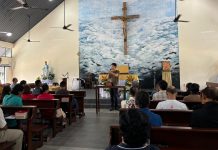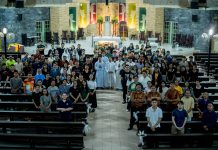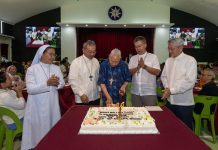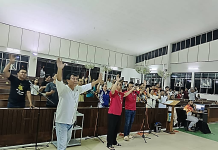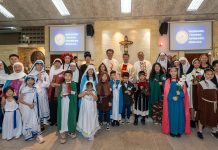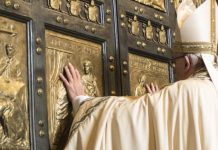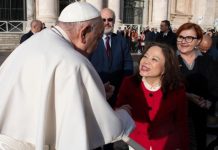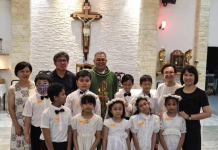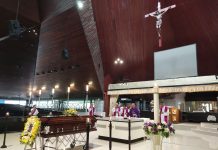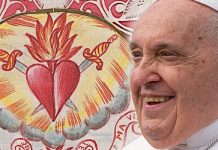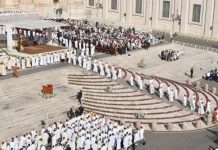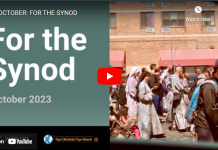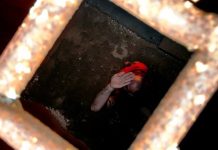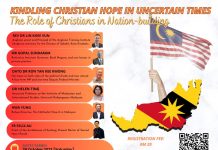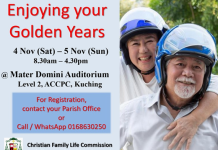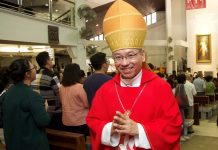In conjunction with the Year of Faith, Today’s Catholic is putting together a series of articles by Fr Felix Au on the Apostles’ Creed, which is the symbol of our faith.
What is faith?
Faith is man’s response to God, who reveals himself to us. It is God’s gift which opens to door for us to enter into a relationship with God and possess eternal life. St John in the Gospel says, “Father… this is eternal life, that they may know you, the only true God, and Jesus Christ you have sent” (Jn 17:3). Faith enables us to know and love God and therefore share God’s own divine life.
What is the Year of Faith?
Pope Benedict declared that the Year of Faith would begin on 11 October 2012 and end on 24 November. 11 October 2012 is an important date as it marks the 50th anniversary of the opening of the Second Vatican Council. 24 November 2013 is the last Sunday of the liturgical year on which we will celebrate the feast of Christ the King.
It is no coincidence that the Pope Benedict chose to relate the Year of Faith to the Second Vatican Council. Vatican II is a great ecumenical council of recent times which is characterised by the Italian word “Aggiornamento” which means “updating”. It refers to how the Catholic faith is ancient yet ever new, and requires us to embrace it with the freshness to meet the challenges of the present age.
In 1962, Blessed Pope John XXIII gathered over 2,000 bishops from all over the world to convene this 21st Ecumenical Council of the Catholic Church. Over a period of three years, the bishops, with the aid of theologians, produced 16 documents teaching about our faith.
Clearly echoing the aspirations of the fathers of Vatican II, Pope Benedict said we should look at our faith as a “lifelong companion that makes it possible to perceive, ever anew, the marvels that God works for us. Intent on gathering the signs of the times in the present of history, faith commits every one of us to become a living sign of the presence of the Risen Lord in the world.” It is noteworthy the Pope, as the young theologian Joseph Ratzinger, was involved directly in Vatican II.
In declaring this year for faith, Pope Benedict invites each of us to make serious efforts to deepen our faith – to truly know what it is we have to believe as Catholics – and distinguish them from what are mere opinions and shifting philosophies of our times.
This is why during this Year of Faith, the Holy Father urges all Catholics to study and reflect on documents of Vatican II and the articles of the Catechism of the Catholic Church. Both Vatican II and the Catechism of the Catholic Church (CCC), promulgated in 1992, are monumental achievements of the Church which articulate the faith for the present age.
Knowledge of the faith is only one aspect of faith. That knowledge must bring us to a faithful living out and celebration of what we believe. Only when this happens is our faith alive.
In the Year of Faith, we are encouraged to build our spiritual muscles. The Holy Father placed at our disposal a means to obtain abundant graces through plenary indulgences. The conditions for obtaining these indulgences include the study of our faith, making pilgrimages and devotions. These are chosen to help to deepen our faith and to make us more receptive to the workings of grace. And God willing, with the right dispositions and openness of heart, God’s grace can truly transform us, enliven our faith, and make us live in the freedom of the children of God.
At every Sunday Mass, we profess our faith by reciting either the Apostles’ Creed or the Niceno-Constantinopolitan Creed. They are also called the “Symbols of Faith”. On certain occasions we might replace the profession of these creeds with the renewal of our baptismal promises using a question and answer form which too is based on the Apostles’ Creed.
The Creed and our Exploration of the Catholic Faith
The Niceno-Constantinopolitan Creed emerged from the first two ecumenical councils: the Council of Nicea in 325 and Council of Constantinople in 381. Older than the Niceno-Constantinopolitan Creed is the Apostles’ Creed. The Apostles’ Creed is considered to be the faithful summary of the apostle’s faith. It has been used in the celebration of baptism in the earliest times of the Church. Christians have divided the Apostles’ Creed into twelve articles and related them to each of the twelve apostles.
In this series of articles, our exploration of what we believe in the Year of Faith will be based on the structure of the Apostles’ Creed. In doing this, we are following a long and revered tradition of catechesis in our Church that had been used by St Augustine of Hippo in the 4th century, and remains in use in the Catechism of the Catholic Church (CCC) written just twenty years ago.
Let us pray that these reflections may help to bring many of us to experience continual conversion, bear much spiritual fruit and give us great joy in rediscovering the treasures of our faith.
Today’s Catholic Vol.24 No.11 February 2013

